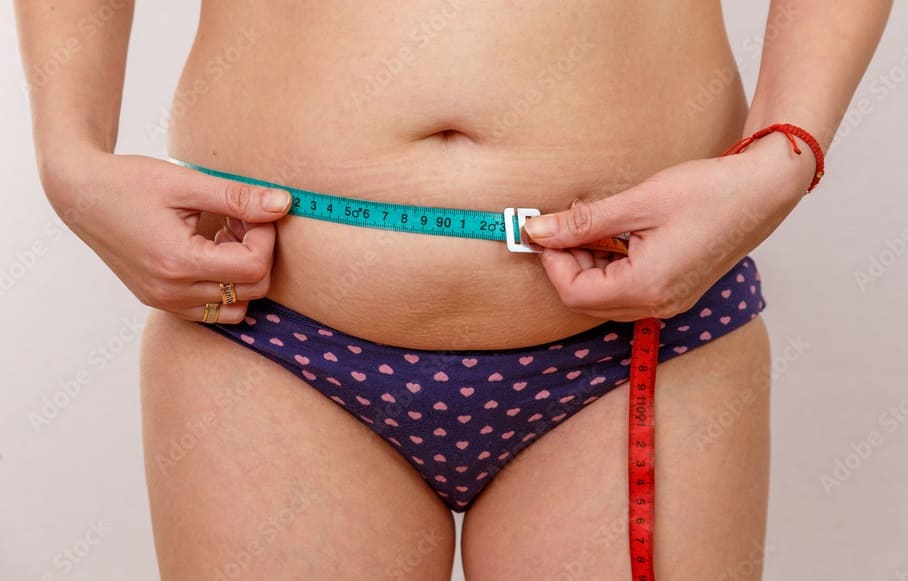When it comes to body fat distribution, women often notice changes in different areas over time. One of the less-discussed but equally important areas where fat tends to accumulate is the pubic area, medically referred to as the mons pubis. If you’ve been wondering why this happens, you’re not alone. Experts suggest that several factors contribute to this change, including hormonal shifts, aging, weight gain, genetics, and lifestyle choices.
In this article, we’ll dive into the expert-backed reasons behind fat accumulation in the pubic area and explore ways to manage or reduce it if it’s causing discomfort. Let’s break down the science behind this common body change.
Why Does Fat Increase in Women’s Pubic Area? Experts Explain the Reasons
1. Hormonal Changes
Hormones play a significant role in fat distribution, and the pubic area is no exception. Estrogen, the primary female hormone, influences where fat is stored in the body. During puberty, pregnancy, and menopause, hormonal fluctuations can lead to increased fat accumulation in this region. A drop in estrogen levels during menopause, for instance, can cause the body to redistribute fat to areas like the abdomen and pubic mound. Additionally, conditions such as polycystic ovary syndrome (PCOS) can lead to hormonal imbalances that encourage fat storage in this area.
2. Weight Gain and Overall Fat Distribution
As women gain weight, fat tends to accumulate in areas with higher estrogen receptor activity, including the lower abdomen and pubic region. This is especially common in those who experience general weight gain due to lifestyle changes, dietary habits, or medical conditions. Excess calorie intake and a sedentary lifestyle can exacerbate fat accumulation in this region, making it more prominent.
3. Aging and Metabolism Slowdown
Aging naturally slows down metabolism, making it easier for the body to store fat. Additionally, with age, there is a gradual loss of muscle mass, which means that fat replaces muscle in various areas, including the pubic region. This is why some women notice a fuller mons pubis as they get older. The decline in collagen and skin elasticity over time also contributes to sagging in the area, which can make the pubic region appear bulkier than before.
4. Genetics and Body Shape
Just like other aspects of our body, fat distribution is highly influenced by genetics. Some women are naturally predisposed to storing more fat in their pubic area due to hereditary factors. If other women in your family have experienced the same, it’s likely that genetics play a role in your body composition. Pear-shaped bodies, for example, often experience fat accumulation in the lower abdomen and pelvic region.
5. Pregnancy and Postpartum Changes
Pregnancy brings about numerous changes in a woman’s body, including weight gain and shifts in fat distribution. The pubic region may store more fat during pregnancy to provide cushioning and protection for the pelvic area. Postpartum, some women find that this fat doesn’t go away easily, even after losing pregnancy weight. Hormonal fluctuations during and after pregnancy also contribute to changes in fat storage, making it a stubborn area for many new mothers.
6. Medical Conditions and Medications
Certain medical conditions, such as insulin resistance, thyroid disorders, and PCOS, can lead to increased fat storage in the pubic area. Insulin resistance, in particular, can cause excessive fat accumulation around the lower abdomen and pelvic region. Additionally, medications like hormonal contraceptives, antidepressants, and steroids may also contribute to changes in fat distribution by altering metabolism and appetite regulation.
7. Lifestyle and Posture
Poor posture and prolonged sitting can contribute to fat accumulation in the lower abdomen and pubic region. Sitting for extended periods can lead to weakened core muscles, which may cause the lower belly and pubic area to appear bulkier. Engaging in regular movement and strengthening core muscles can help prevent excessive fat accumulation in this region.
How to Manage or Reduce Fat in the Pubic Area?
If the accumulation of fat in the pubic region is causing discomfort or concern, there are ways to manage it:
- Regular Exercise – Engaging in cardio and strength training can help reduce overall body fat, including in the pubic area. Exercises targeting the core and lower abdominal muscles, such as planks and leg raises, can improve muscle tone in the area.
- Healthy Diet – Eating a balanced diet rich in lean proteins, healthy fats, and fiber can aid in weight management. Reducing refined sugar and processed foods can help regulate insulin levels and prevent excess fat storage.
- Hydration – Drinking plenty of water helps with metabolism and fat breakdown while preventing water retention that can make the area appear swollen.
- Hormonal Balance – Consulting a doctor about hormonal imbalances may help in managing fat distribution. Hormone therapy or lifestyle modifications can be beneficial for women experiencing menopause or PCOS-related weight gain.
- Cosmetic Procedures – In cases where fat in the mons pubis is excessive and persistent, procedures like liposuction or non-invasive fat reduction treatments (such as cryolipolysis or radiofrequency therapy) may be an option.
- Improving Posture and Movement – Strengthening the core and pelvic muscles through activities like yoga and Pilates can enhance muscle definition and reduce the prominence of the mons pubis.
Final Thoughts
Changes in the pubic area are normal and often influenced by a mix of factors, including hormones, age, genetics, and lifestyle. Understanding the reasons behind fat accumulation in this region can help women make informed decisions about their health and body. While some factors, like genetics, cannot be changed, maintaining a healthy lifestyle, staying active, and seeking medical advice when necessary can help manage fat distribution effectively. If concerns arise, consulting a healthcare provider is always a good step toward achieving a balance between health and body confidence.
Also Read:
